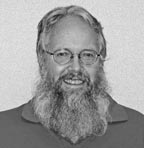The Rich Bounty of Old Briggs Terrace

president of the Historical Society
of the Crescenta Valley and loves local history. Reach him at
lawlerdad@yahoo.com.
Doctor Benjamin Briggs is considered our founder having laid out our streets, founded churches and schools, and even coined the name “Crescenta.” He first established himself in 1881 on the shelf of land that sticks out high above the valley at Pickens Canyon – today a neighborhood known as Briggs Terrace. Local historian Jo Anne Sadler has written much about Dr. Briggs, and in her book “Crescenta Valley Pioneers” she reprints a rich eyewitness description of the verdant paradise that Briggs had created for himself on the terrace in the 1880s.
During Briggs’ time, the Terrace was reached by a long wagon track (now Briggs Avenue) that headed straight up the rocky valley from Foothill Boulevard. As the road climbed, orchards of olive trees grew on either side, the very same olive trees that now line parts of Briggs Avenue and exist in a few lucky backyards. When the road reached the Bathey Ranch at the top edge of the valley floor, it turned right (Shields Avenue) and began to climb the edge of the terrace. The road passed Theodor Pickens’ old cabin and Dr. Briggs’ barn (at Shields and Canyonside), continuing to wind up the terrace edge, until it emerged onto the broad flat terrace itself (now bounded by Terrace Drive). Here Briggs had built a long low cement structure, situated to fully catch both sun and breeze, entirely surrounded by a deep veranda. The yard in front of the house was a sloping lawn, ending at a small orange grove. On the edges of the lawn were a fountain and a crescent-shaped goldfish pond shaded by a pepper tree, with other exotic trees such as camphor, acacia and rubber trees scattered about. Tucked away in corners of the yard were clumps of roses, date palms and banana trees.
The Briggs family had made their fortunes as fruit ranchers so much of the rest of the land was dedicated to a multitude of fruit. Above the house were a series of smaller rock-faced terraces, and each granite face was verdant with flowering vines and edged with hedges of rose and geranium. Each terrace had a different orchard on its flat top. The first and lowest terrace was entirely devoted to grapes – a wide variety, including cuttings his son-in-law had brought back from Persia. The next terrace was devoted to citrus, a huge orange orchard, with a lemon orchard to one side. Another terrace above that, bordered by a hedge of Monterey cypress, contained a large orchard of alternating mixed fruit trees – fig, orange, quince and pomegranate.
Continuing up the mountain were more orchards of peach, pear, plum and apples, along with more vineyards and orange groves. Nut trees of walnut and almond grew higher still. His fruit-packing house stored dried fruit, raisins, barrels of pickled olives, and casks of wine.
Watering this paradise was the cool pure water coming from the several springs high up in the San Gabriel Mountains, stored in a large reservoir and a water tower, and piped across the property. It is noted that water for drinking was piped in directly from the springs to ensure freshness. Timber was harvested for fuel from the dark canyons above, and horses and cattle were raised and corralled down near the barn.
Briggs, like many of the early Crescenta Valley pioneers, engaged in beekeeping, and in one letter he described harvesting 300 pounds of honey from his hives. And all about was the dry clean air – perfect day after perfect day.
From this description of amazing bounty we get an impression of Benjamin Briggs as a vigorous, healthy man – a man of boundless energy – invariably healthy from the rich, nutritious environment in which he lived. But ironically, he was slowly dying. He suffered from a bullet lodged in his spine for 40 years, and was slowly being consumed by tuberculosis. Amazingly his strength of will moved him until the end. He was dying, yet in his brief time here – just over 10 years – he found the energy to found a town and create a lush paradise out of a barren wilderness.
